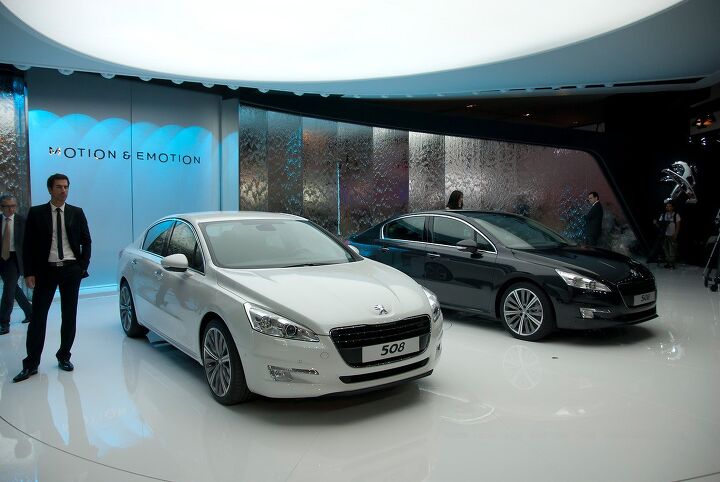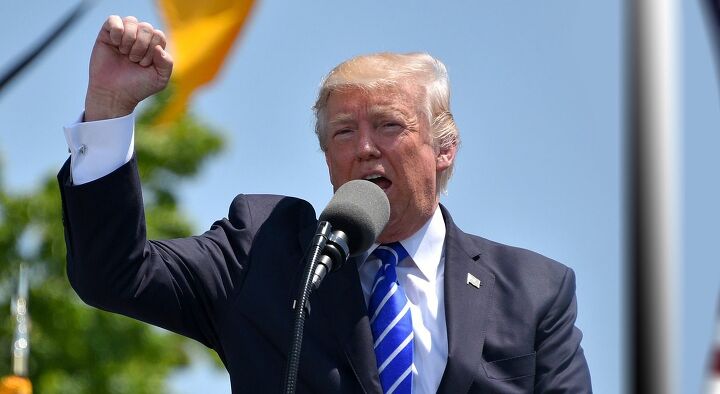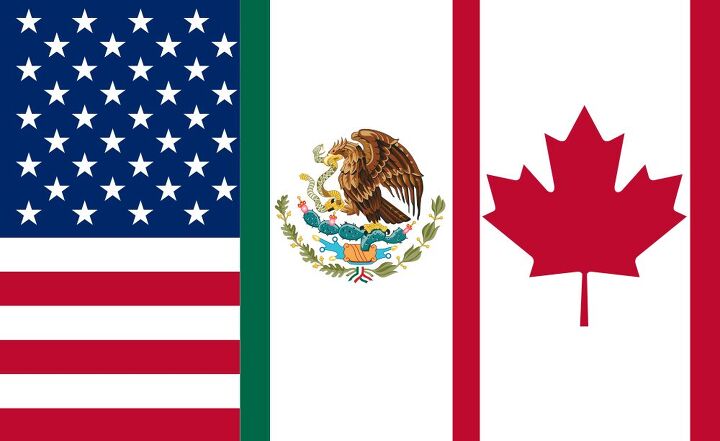#trade
Bet You Forgot Today Was the NAFTA Deadline
If you forgot today was the deadline for finalizing North American Free Trade negotiations, don’t worry, so did practically everyone else. In fact, the whole affair is starting to feel like that old car that’s been sitting in your friend’s yard for far too long. He keeps telling you he’s going to fix it up and make it better than new. “This is the summer,” he says. But you know he’s just going to keep mowing around it while it continues to rust and collect mice, so you’ve tried to push it out of your mind.
Like the restoration, the entire concept of a deadline for the trade deal is rather arbitrary at this point. NAFTA’s initial target date for an agreement between the three countries was March 31st, roughly one year after negotiations began. The May 17th deadline was claimed by U.S. Speaker of the House Paul Ryan, who said Congress had to be notified under the Trade Promotion Authority statute.
“We need to receive the notice of intent to sign soon in order to pass it this year,” explained Ryan’s office. “This is not a statutory deadline, but a timeline and calendar deadline.”
Basically, Congress wants to influence the president and NAFTA negotiators to conclude talks swiftly and reach an agreement before midterm elections. But Mexican officials warned everyone not to get their hopes up. “The possibility of having the entire negotiation done by Thursday isn’t easy, we don’t think it will happen by Thursday,” said Mexican Economy Minister Ildefonso Guajardo earlier this week.
Here's How Trade Negotiations Are Looking for the Month of May; Steel Tariffs Stalled Through June
May kicked off with a bundle of trade deals going into hibernation mode. After some legitimate — albeit quaint — progress, NAFTA decided to take a break this week. Currently, U.S. Trade Representative Robert Lighthizer is in China to circumvent that brewing trade war and is unable to commit himself to the North American Free Trade Agreement’s renegotiation.
That’s probably fine, because Mexico’s auto reps need time to cool off.
The United States’ most recent proposal for increasing NAFTA’s regional automotive content includes a four-year evolvement to meet a 75-percent regional value threshold. It also suggests new labor rules requiring “substantial work” to be set at wages of $16 an hour or more. The move is intended to help the U.S. and Canada bolster production and force Mexico to raise its own wages.
A significant portion of Mexican trade officials aren’t keen on either aspect, resulting in a mixed response overall.
China Plans to Open Car Market By 2022
After weeks of unpleasant trade talk and posturing between Washington and Beijing, China’s lead economic planner announced the country would be easing limits on foreign ownership of automotive ventures. While an official metric was not posted, it will be less than the current 50-percent cap non-Chinese automakers have been limited to since 1994. But, for all we know, China may be seeking to scrap the mandate entirely.
We did, however, get a timeline. On Tuesday, the People’s Republic announced it would remove foreign ownership caps for companies making fully electric and plug-in hybrid vehicles this year — followed by commercial vehicle manufacturers in 2020 and the rest of the car market by 2022.
All About Imports: Chinese President Tries to Mellow Blossoming Trade War With U.S.
“Paramount Leader” and Chinese President Xi Jinping clearly hopes to defuse China’s trade situation with the United States after Donald Trump launched an aggressive tariff hike on metals last month. The People’s Republic has already filed a complaint with the World Trade Organization alleging Trump’s decision to impose additional duties of 25 percent on steel and 10 percent aluminum violate international trade rules.
It’s also requesting 60 days of consultations with the United States to resolve the dispute.
There’s also an olive branch on the table. Xi has promised to cut auto import taxes and improve intellectual property protections in a bid to bolster foreign exports and ease tensions before the U.S. and China enter into a full-blown trade war. Meanwhile, the White House is threatening to increase duties on $50 billion worth of Chinese goods in response to claims that China essentially bullies foreign companies to hand over technology in order to sell it inside the country.
Team Trump Eases Demands on NAFTA's Regional Auto Content
The United States is softening the contentious automotive content requirement mandates pushed by the Trump administration as part of NAFTA renegotiation talks. While the demand is only one of many asks coming from the U.S., both Canada and Mexico said forcing 85 percent of a vehicle’s overall content to be sourced from the three countries (in order to side-step tariffs) was a nonstarter. Over the past year, the issue became a major sticking point in the trade talks — hindering progress and possibly dooming them to failure.
While Trump’s intent was to bolster domestic employment by incentivizing North American parts suppliers, automakers expressed concerns and noted it was often difficult to reach the current threshold of 62.5 percent.
The United States has now proposed applying the new content requirement only to major components (like a vehicle’s powertrain) while leaving fasteners (nuts, bolts, etc.) alone. As an automobile is made up of tens of thousands of individual parts, deciding what should and should not be counted will make a big difference. Still, some manufacturers are likely to have difficulty meeting the proposed content requirement on critical engine components.
Tesla Talks on Track, China Says, Despite Musk's Trade Rant
Earlier this month, Tesla Motors CEO Elon Musk called into question the fairness of China’s automotive trade practice via a handful of tweets to President Donald Trump.
“Do you think the US [and] China should have equal [and] fair rules for cars? Meaning, same import duties, ownership constraints [and] other factors,” Musk asked. “For example, an American car going to China pays 25 [percent] import duty, but a Chinese car coming to the US only pays 2.5 [percent], a tenfold difference.”
While Trump used Musk’s Twitter outburst as proof of China’s trade imbalance with the United States, the media began to wonder if the Tesla CEO was having an unpleasant time negotiating with the nation. In 2017, the automaker appeared to be on the cusp of a deal to build a factory in Shanghai — allowing it to cut costs within the region by a third. Fortunately for the brand, Musk’s trade concerns haven’t derailed progress. The Shanghai government has confirmed its talks with Tesla are progressing well.
What's Standing Between You and a Future Citron or Peugeot? Possibly, a Tariff
The threat of new import tariffs has PSA Group worried about its plan to return to the United States. Following President Trump’s proposal to levy a 25-percent tax on steel imports and a 10-percent tariff on inbound aluminum, Europe balked at the suggestion, leading to further threats of a car tariff.
Right now, the U.S. levies a 2.5-percent tax on imported European vehicles, far less than Europe’s 10-percent tariff on vehicle travelling eastward across the Atlantic. There’s a 25-percent U.S. tariff on European vans and trucks, too, which explains why crates of Mercedes-Benz van components sail into the port of Charleston, South Carolina at regular intervals.
According to Trump, any European retaliation against the proposed metal tariffs — which seem all the more likely given yesterday’s resignation of the president’s pro-free trade economic advisor, Gary Cohn — would see the U.S. ratchet up its car tariff. If the scenario comes to pass, your dreams of one day buying a new French car in America could easily be dashed.
Trump is Talking Tariffs Again, Takes Aim at European Cars
President Donald Trump amplified his earlier threat of a global trade war this weekend by suggesting he would impose a tax on European cars if the EU countered his proposed steel and aluminum tariffs. On Thursday, Trump called for a 25 precent import tariff for steel and a 10 percent fee on aluminum in the hopes it would bolster those industries domestically. Europe responded by threatening a tax on imported bourbon, blue jeans, and American motorcycles. Apple pie and baseball were not mentioned, but you get the idea.
European Union officials clearly wanted to send a message to the president to back down. Instead, he came back even harder in a tweet from Saturday. “If the E.U. wants to further increase their already massive tariffs and barriers on U.S. companies doing business there, we will simply apply a Tax on their Cars which freely pour into the U.S.,” he wrote. “They make it impossible for our cars (and more) to sell there. Big trade imbalance!”
Slow-Moving NAFTA Talks Could Be Further Hampered by Mexico's Next President
With NAFTA negotiations finally progressing a bit, now would be the perfect time for something to bring up another potential hurdle and ruffle everyone’s feathers. This time, the prospective cataclysm stems from Mexico, and has manifested itself as one man — presidential frontrunner Andres Manuel Lopez Obrador, known colloquially as “AMLO.”
Business interests and NAFTA advocates are fearful the leftist candidate could chuck a wrench into the trade policy by adopting a hardline stance opposing the White House’s plan to redefine the agreement to favor the United States. Lopez Obrador is a long-time proponent of social programs that help vulnerable members of society. However, many criticize him for being a populist with socialist ideals that do not serve the financial well-being of the country at large.
While this is debatable, winning Mexico’s July 1st election could see him push back hard against U.S. trade proposals, stalling progress.
NAFTA Talks Finally Progressing Slightly Better Than a Dumpster Fire
After what could be called some of the least productive negotiations in North American history, some progress is finally being made on the North American Free Trade Agreement. We know, with all of the negative rhetoric being slung from all sides, it sounds impossible. However, all three trading partners are beginning to bend on some of the issues that have proven the trickiest to navigate.
Among them is the faintest glimmer of hope that the automotive content requirements pushed by the United States might be adopted by the other nations, albeit in a modified form.
Still, progress is progress, and it only took about six months to get to a point where some meaningful headway could finally be made. Absolutely incredible. Let’s give these officials a huge round of applause for really getting in there, taking care of business, and not wasting a bunch of time.
Union Boss Reassures Everyone That NAFTA Is Toast
With everyone weighing in on the ultimate fate of the North American Free Trade Agreement, it almost seems as if we’re cataloging their bets to see just how right or wrong they’ll be in the negotiatory aftermath. Considering there has been such a limited amount of progress on the trade talks, there honestly isn’t much else to do.
Suggesting that NAFTA is “is going to blow up in 2018,” Jerry Dias, president of the Canadian union Unifor, has planted his flag on the side of a total breakdown of the agreement. Unifor represents 23,500 Detroit Three auto workers living north of the border, plus some 16,000 working in the supply chain.
As a union leader, Dias is prone to hyperbolic statements. However, his insight into the situation runs a little deeper than most.
NAFTA Update: Nobody Has Any Idea What's Going On
In case you haven’t kept up with the coverage on the renegotiation of the North American Free Trade Agreement, things haven’t gone well. Despite wrapping the latest round of talks in Washington on Friday, negotiators have made no clear progress on updating the trade deal. Considering a new deal is supposed to be finalized by the end of March, it’s beginning to look as if the NAFTA revamp might be doomed.
The biggest issue crippling the talks continues to be regional-content requirements for cars to qualify for NAFTA benefits. Both Mexico and Canada have described the U.S. content proposals as “unworkable.”
Pence Meets With Automakers Annoyed by NAFTA Changes
The automotive industry is wary of any changes that might be made in regard to the North American Free Trade Agreement. Fortunately for them, little progress has been made during the last few months of negotiations. But that doesn’t create an assurance that changes aren’t still en route. So, manufacturers and suppliers have banded together via various trade groups to voice their opinion on how to best handle NAFTA.
Meanwhile, the Trump administration has attempted to make itself appear friendly to the automotive business. Continuing these efforts, Vice President Mike Pence has met with General Motors CEO Mary Barra, Fiat Chrysler’s Sergio Marchionne, Ford North America President Joe Hinrichs, and a handful of other top-tier auto executives.
House Members Aren't Digging Trump Administration's Auto Trade Proposals
A bipartisan group of over 70 members of the U.S. House of Representatives has asked the Trump administration to reconsider its North American Free Trade Agreement proposal on auto parts rules of origin. Seen as a sunset clause by Canada and Mexico that tweaks international agreements to lower the United States’ trade deficit, the rule has also received some serious blowback from domestic automakers. They’ve even used trade groups to craft awareness campaigns and reach out to congress, a decision that appears to be working.
Currently, NAFTA mandates at least 62.5 percent of the materials used in a car or light truck be sourced from North America in order to avoid tariffs. The Trump administration’s proposal would up that requirement to 85 percent, with 50 percent of the total being from the United States.
Real Fake News: Donald Trump and Where Japanese Manufacturers Choose to Build Their Cars
On Monday, President Donald Trump requested that Japanese automakers consider assembling their vehicles in the United States. “Try building your cars in the United States instead of shipping them over. That’s not too much to ask,” Trump told Japanese auto executives during this week’s visit. “Is it rude to ask?”
While the internet response was to immediately scoff at how little Trump knew about the industry (Japanese companies have been building automobiles in North America for decades), the reality was far more nuanced.
Taken in the broader context, Trump actually said, “Several Japanese automobile industry firms have been really doing a job. And we love it when you build cars — if you’re a Japanese firm, we love it — try building your cars in the United States instead of shipping them over. Is that possible to ask? That’s not rude. Is that rude? I don’t think so.”






























Recent Comments